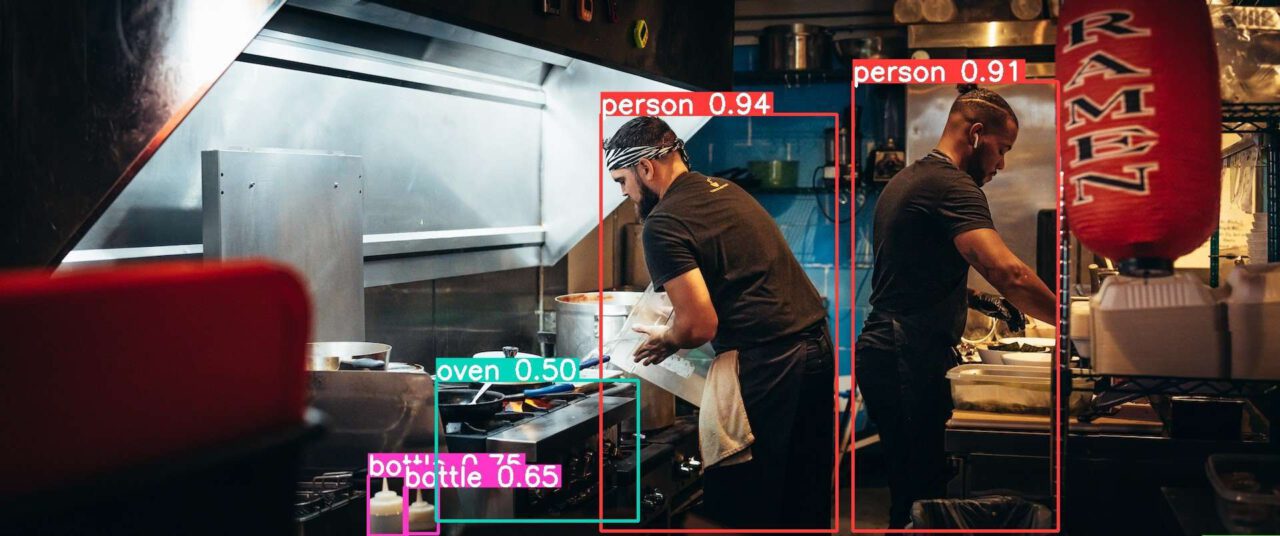In the era of digital transformation, the restaurant industry is catching up, increasingly deploying AI technology to enhance efficiency, reduce costs, and create better customer experiences.
Computer vision, a subset of artificial intelligence (AI), enables machines to “see” and “understand” images and video in real-time. In the following, we discuss the vast potential of computer vision for restaurant innovation use cases and show how AI is shaping the future of the restaurant industry.
Need for automation in the restaurant industry
In today’s fast-paced and highly competitive gastronomy landscape, restaurant businesses face a multitude of challenges. Those range from managing increasing operational costs and labor shortages to ensuring food safety and maintaining quality consistency. In parallel, customer expectations are increasing, driving the need for convenience, quick service, and sustainable practices.
To manage those challenges, restaurant owners aim to drive automation through the adoption of new technologies such as predictive or generative AI. Exemplary restaurant use cases include AI systems, chatbots, POS systems, smart ordering systems, kitchen automation, voice assistants, demand forecasting, sentiment analysis, ML data analytics, and more.
Automating operations not only streamlines workflows but also addresses these issues, helping restaurants stay profitable while consistently delivering high-quality service.
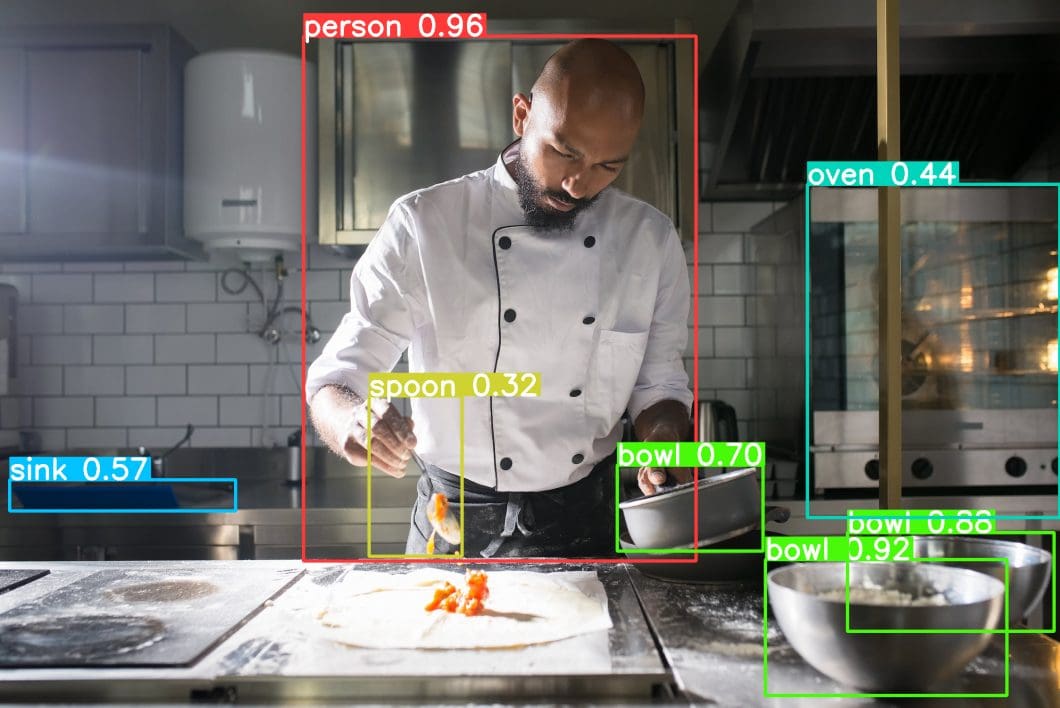
Computer vision and AI in restaurants
Computer vision and AI are at the forefront of this automation revolution. By enabling computers to interpret visual data from the real world, computer vision provides valuable insights to digitize operations, facilitate decision-making and increase operational efficiency.
AI vision powers automation with cameras that serve as the “eyes” to see and analyze situations with ML techniques. Real-time data is captured and analyzed by AI and deep learning algorithms. From tracking inventory to monitoring table occupancy, these systems provide 360-degree visibility into restaurant operations.
State-of-the-art computer vision applications can utilize common security cameras without additional sensors. This is important in the restaurant industry because businesses such as fast-food chains often operate in franchise models with diverse hardware set-ups.
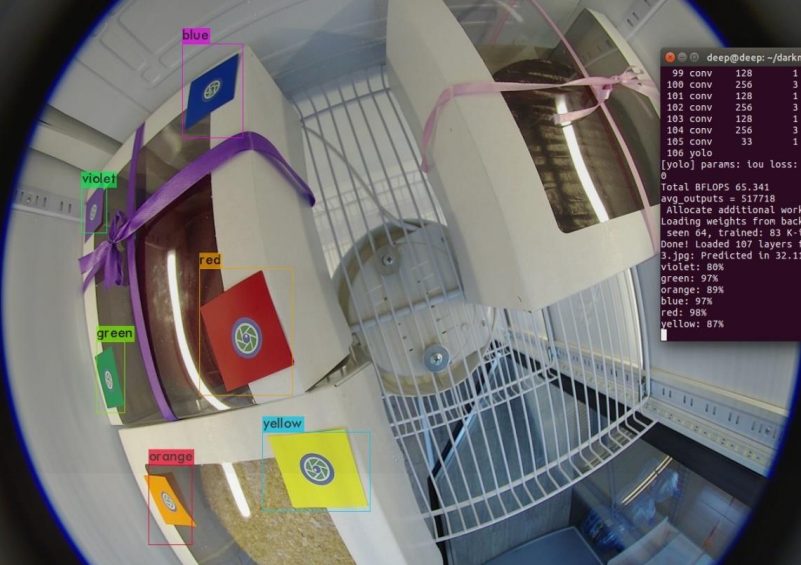
Use cases of computer vision in restaurants
Computer vision applications in restaurants are diverse and depend on the business model and strategy. Here are some of the most important visual AI restaurant use cases:
- Quality Control: With computer vision, restaurants can automate food inspection for consistency and safety, reducing errors and waste. Standardized quality control is critical to avoid fines and food safety issues across large restaurant chains.
- Adherence to SOPs: Visual AI is used to automatically monitor kitchen hygiene and adherence to SOPs, for example, to ensure that employees are wearing gloves and hair restraints at all times. Such use cases are important for ghost kitchens or fast food restaurants, where the brand owners have limited possibilities to ensure adherence to guidelines.
- Table Management: Intelligent algorithms can monitor table occupancy to manage seating arrangements efficiently, increasing turnover rates. Optimizing table occupation is highly important for cafes and bistros. Similarly, cameras can be used to analyze the utilization of parking lots and drive-throughs.
- Inventory Management: Applications for inventory tracking can provide predictions for restocking requirements. They use object detection and counting, multi-barcode detection, and label reading. Buffet restaurants can also use AI vision to optimize the refilling process.
- Customer Engagement: Computer vision can recognize customer behavior patterns and preferences. This is used to drive customer engagement and improve the customer experience, for example, through queue detection to reduce waiting times. This is important for conventional restaurants but also food trucks, cafes, or bistros.
- Staff Efficiency: Workflow analysis helps streamline staff movement and increase operational efficiency at the point of sales. The visual algorithms make it possible to make better hiring decisions based on objective data points.
Reach out and get in touch with us to learn more about use cases for your restaurants.
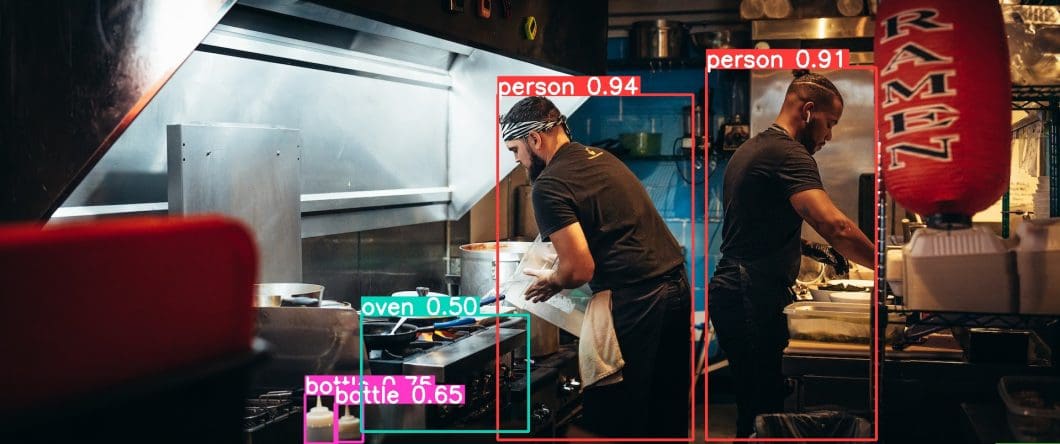
The computer vision infrastructure
Software infrastructure for computer vision systems refers to a combination of various technologies, platforms, and tools necessary to develop, deploy, and manage computer vision applications. Such an AI vision infrastructure typically includes a large number of ML libraries and frameworks for image and video processing, such as OpenCV, TensorFlow, or PyTorch.
The AI vision infrastructure provides the AI software systems to scale, maintain, and troubleshoot computer vision projects effectively. Since most companies will need several applications, the AI infrastructure must be robust and flexible enough to operate all applications in one place.
Because computer vision involves large video data and massive computing workloads, such AI vision systems have to run “at the edge”. Such Edge AI architectures orchestrate large-scale deployments to distributed edge devices (servers) that are connected to physical cameras across the restaurants.
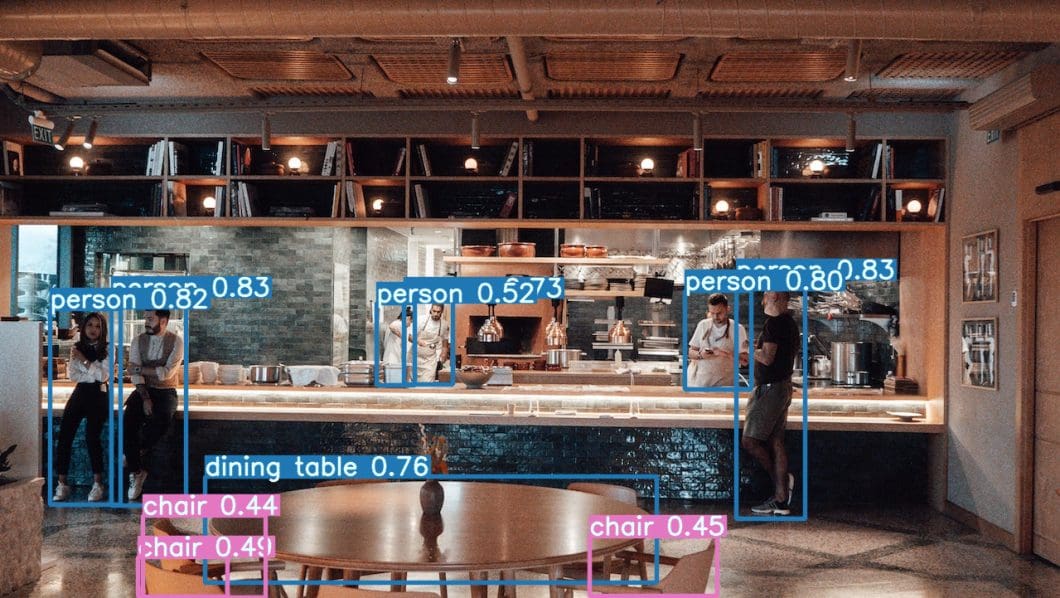
Viso Suite – the end-to-end AI infrastructure
The Viso Suite Computer Vision Platform is the only full end-to-end solution for businesses to build and scale their real-world computer vision applications. It provides an intuitive interface, seamless hardware and software integrations, and powerful privacy and security tools.
Viso Suite is suitable for building custom computer vision solutions and managing, scaling, and optimizing multiple applications in one place. This makes it an ideal choice for restaurant owners looking to automate operations with computer vision without exposing their data and applications.
Reach out and get a demo for your company, and start a proof of concept with a first pilot application.
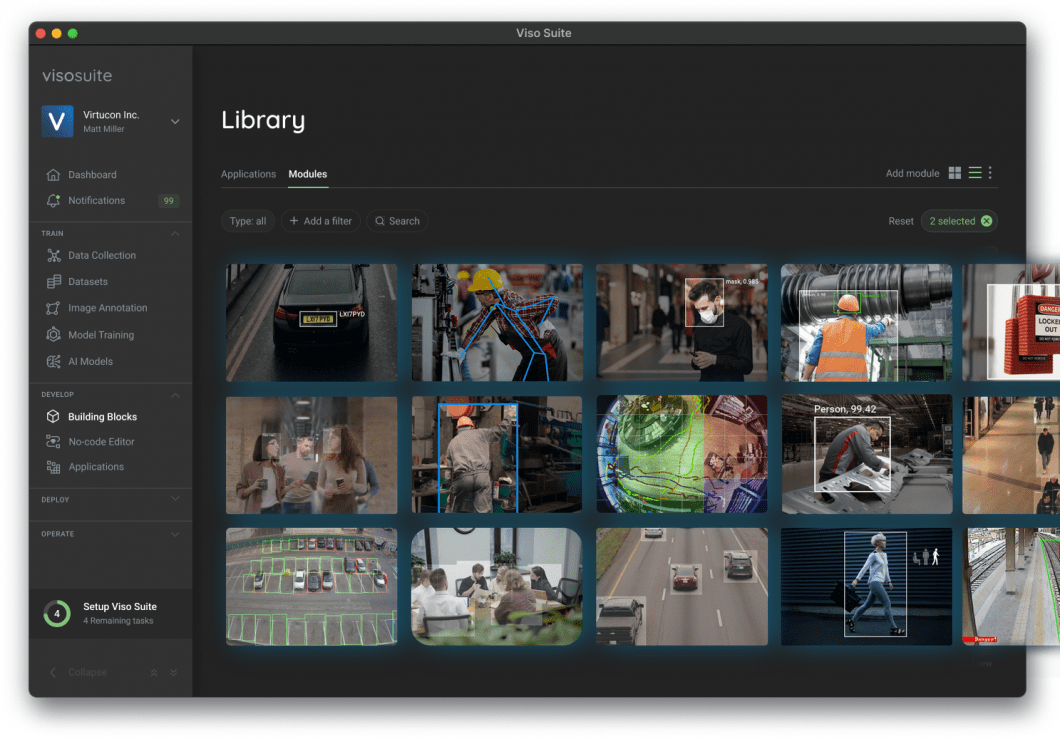
Make vs. buy ready-made computer vision solutions
When it comes to implementing advanced technologies like computer vision, businesses often face the “make or buy” dilemma. While buying a ready-made solution can offer “canned” tools, more and more restaurant businesses have decided to build up their own AI vision systems.
One key reason behind this choice is data control and privacy. Businesses generate vast amounts of valuable data that can provide competitive advantages when analyzed and utilized effectively. By building their own systems, restaurant operators retain full ownership and control over their data, ensuring it stays safe and can be used to its maximum potential.
Moreover, custom-built computer vision systems can be tailored to the specific needs and processes of the business. Often, an off-the-shelf solution does not provide the required level of integration. Custom systems allow for greater flexibility to make adjustments or additions as the business evolves.
At viso.ai, we enable businesses to train their teams and partners to implement computer vision projects rapidly with automated products. Meanwhile, we provide all the support and professional services needed. Get in touch to learn more.
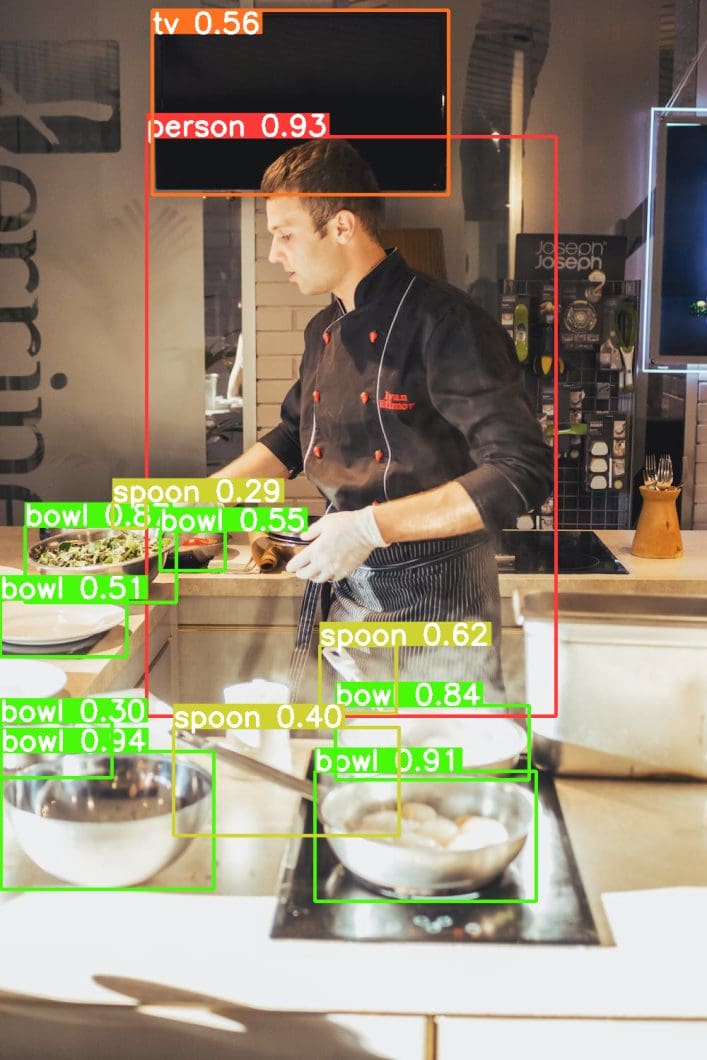
Adopting computer vision: a step-by-step guide
- #1. Understanding the need: The first step is recognizing operational challenges that computer vision can solve. Create a list of all possible use cases and rate them all by value and complexity on a scale of 1 to 10. Use the rating to create a shortlist of 3-5 use cases.
- #2. Prioritizing the roadmap. Determine a pilot use case to start with. It’s important to choose one single, very simple application with a reasonable business value. This will be the starting point for computer vision adoption.
- #3: Planning: Identify possible scenarios of how the application could be implemented. Often, there are different ways to achieve the desired outcome; for example, movement can be detected through object detection or pose estimation, classification, and so on. Next, determine the equipment needed for the Proof of Concept (PoC) and put together a team with a project lead.
- #3: Infrastructure: Choose a computer vision infrastructure or determine your custom stack., With Viso Suite, you have an end-to-end computer vision platform that provides an intuitive interface.
- #4: Implementation: Set up the Viso Suite workspace, build the application using visual drag-and-drop, and integrate it with existing systems and cameras.
- #5: Training: Ensure that the team members understand how the application works and how they can update and tweak the system.
- #6: Iteration and Optimization: Continuously evaluate system effectiveness, making necessary adjustments for optimal performance.
Conclusion – visual AI restaurant technology
As restaurants evolve, computer vision technology will play an increasingly central role in their ability to automate operations. Especially large restaurant chains can leverage AI technology for AI vision in restaurants to gather data, automate processes, and reduce costs.
The Viso Suite Computer Vision Platform provides a powerful solution for restaurants seeking to leverage this technology, providing a comprehensive infrastructure suitable for all computer vision applications needed today and in the future.
